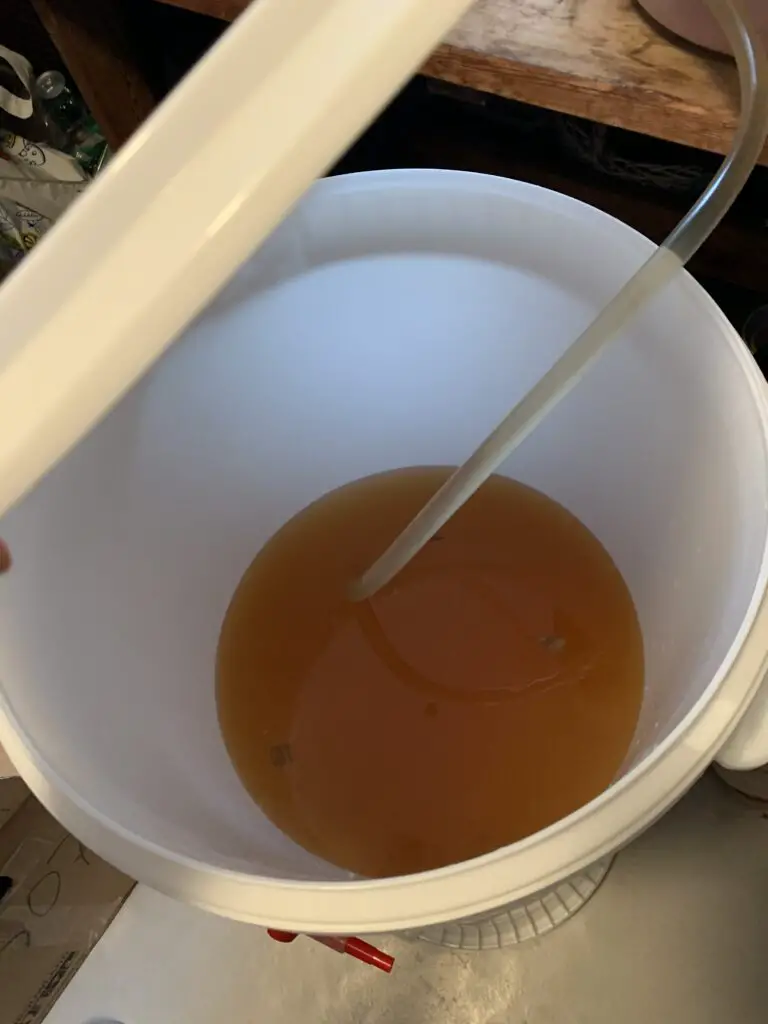Tej, also known as Ethiopian honey wine, is a traditional fermented beverage that holds great importance in Ethiopian culture.
It is made from a mix of honey, water, and gesho leaves, which give it a distinct flavor.
Tej is often enjoyed during festive occasions and is considered a symbol of hospitality.
History and Cultural Significance of Tej
Tej has a rich history that dates back centuries in Ethiopian culture. It is believed to have been enjoyed by Ethiopian kings and played a significant role in traditional rituals and ceremonies. Today, Tej is still made and enjoyed by Ethiopians and has gained popularity worldwide.

The cultural significance of Tej extends beyond just being a beverage. It is seen as a symbol of friendship, generosity, and celebration. It is often served to guests and is a staple in Ethiopian hospitality. Tej is also associated with Ethiopian traditional music and dance, adding to its cultural significance.
To learn more about the history and cultural significance of Tej, you can visit the Tej Wikipedia page.
Tej is a unique and flavorful beverage that offers a taste of Ethiopian culture. In the next sections, we will explore the process of making Tej at home and share some tips for achieving the perfect brew.
II. Ingredients and Equipment
Key Ingredients for Making Tej
Making Tej, the traditional Ethiopian honey wine, requires a few key ingredients that give it its distinct flavors and characteristics. Here are the essential ingredients you will need:
1. Honey: The base of Tej is honey, and it is essential to use high-quality honey for the best results. Alfalfa honey is a popular choice due to its light and neutral flavor, but you can experiment with different varieties to suit your taste.
2. Gesho Leaves: Gesho leaves are crucial for fermenting Tej and adding unique flavors to the brew. Gesho leaves are typically boiled before being added to the must, and they contribute to Tej’s slight sourness and tanginess.
3. Yogurt: Adding live active culture yogurt to Tej introduces a bacterial culture that contributes to the overall fermentation process, adding complexity and funkiness to the final product.
4. Yeast: To ensure a successful fermentation, you will need to use a suitable yeast strain. EC1118 is a popular choice as it is a clean and aggressive yeast that helps ferment Tej efficiently.
Essential Equipment for Homebrewing Tej
To make Tej at home, you will need the following essential equipment:
1. Large Pot: A large pot is necessary for boiling water, gesho leaves, and honey. Choose a pot that can hold at least one gallon of liquid.
2. Fermentation Vessel: A food-grade fermentation vessel is needed to hold and ferment the Tej. A glass carboy or food-grade plastic bucket with an airtight lid can work well.

3. Airlock: An airlock is essential for creating a sealed but vented environment during fermentation. It allows gases to escape while preventing oxygen and contaminants from entering.
4. Funnel: A wide-mouth funnel is handy for transferring liquids into and out of the fermentation vessel without spilling or splashing.
5. Measuring Tools: Accurate measurements are crucial in brewing Tej, so having measuring spoons, a kitchen scale, and a hydrometer can help ensure precise amounts of ingredients.
6. Sanitization Supplies: Maintaining a clean and sanitized brewing environment is crucial in preventing contamination. Use a food-grade sanitizer to clean all equipment before use.

With the right ingredients and equipment, you are well on your way to brewing your own delicious Tej at home.
III. Step-by-Step Brewing Process
Preparing Gesho Leaves and Honey
To start brewing Tej, you will need to prepare the gesho leaves and honey. Here’s how:
- Gather fresh gesho leaves or purchase dried gesho leaves from a reputable source.
- If using fresh gesho leaves, rinse them thoroughly and remove any impurities.
- If using dried gesho leaves, crush them to release their flavors and aromas.
- Measure the desired amount of honey for your batch of Tej.
Boiling and Fermenting Gesho Water
Once you have prepared the gesho leaves and honey, follow these steps:
- Boil water and add the gesho leaves.
- Simmer the gesho leaves for about 30 minutes to extract the flavors.
- Strain the gesho water into a clean container and allow it to cool.
- Add the honey to the gesho water and stir until it dissolves.
Adding Yeast and Bacterial Culture
After preparing the gesho water and honey mixture, it’s time to add yeast and bacterial culture:
- Sprinkle a suitable wine yeast over the mixture according to the manufacturer’s instructions.
- Add a bacterial culture, such as the White Labs WLP677 Lactobacillus delbrueckii culture, to introduce a slight sourness to your Tej (optional).
Monitoring the Fermentation Process
Once the yeast and bacterial culture are added, it’s important to monitor the fermentation process:
- Cover the container with a breathable cloth or airlock to allow gases to escape while preventing contamination.
- Place the container in a warm and dark area to ferment for about 2-4 weeks.
- Throughout the fermentation process, regularly check the specific gravity with a hydrometer to track the progress.
Back Sweetening and Bottle Conditioning
After fermentation is complete, it’s time to back-sweeten and bottle your Tej:
- Taste the fermented Tej and adjust the sweetness to your preference by adding more honey if needed.
- Once you are satisfied with the taste, transfer the Tej into clean bottles and seal them.
- Allow the Tej to undergo bottle conditioning for at least a few weeks before enjoying.
Remember to always sanitize your equipment and follow proper brewing procedures to ensure the best results. Enjoy your homemade Tej responsibly and savor the unique flavors of this traditional Ethiopian honey wine.
IV. Flavor Profiles and Variations
When it comes to Tej, there are several variations and flavor profiles that can be explored to add a unique twist to this Ethiopian honey wine. Here are a few options to consider:
Different Varieties of Gesho and their Impacts on Flavor
Gesho, the key ingredient in Tej, comes in different varieties, and each variety can have an impact on the flavor of the final product. Here are some common varieties of Gesho and their flavor profiles:
- Gesho Leaves: The most commonly used part of the Gesho plant, Gesho leaves add a bitter and slightly earthy flavor to Tej. They contribute to the traditional taste of this honey wine.
- Gesho Stems: While Gesho stems are not as commonly used as the leaves, they can provide a more intense and woody flavor to Tej. Adding crushed Gesho stems can add depth and complexity to the final product.
Adding Fruits or Herbs for Unique Tej Recipes
To create unique variations of Tej, you can experiment with adding different fruits or herbs during the fermentation process. Here are some ideas to get you started:
- Strawberries: Adding fresh strawberries to Tej can impart a sweet and fruity flavor, balancing out the bitterness of the Gesho.
- Lemon or Orange Zest: Incorporating lemon or orange zest can add a citrusy and refreshing note to Tej, enhancing its overall flavor profile.
- Mint: Infusing Tej with mint leaves can create a cool and refreshing taste, perfect for hot summer days.
Remember, when experimenting with flavors and ingredients, it is important to maintain a balance to ensure that the essence of Tej is not overpowered. Start with small quantities and adjust according to your taste preferences.
By exploring different flavor variations, you can create your own signature Tej recipe that suits your palate and adds a personal touch to this traditional Ethiopian honey wine.
V. Serving and Pairing Suggestions
Best Practices for Serving Tej
When it comes to serving Tej, it’s important to follow some best practices to fully enjoy the flavors and aromas of this Ethiopian honey wine.

Here are a few tips:
1. Serve Chilled: Tej is best enjoyed cold. Keep your Tej in the refrigerator before serving to ensure a refreshing experience.
2. Use Traditional Glassware: To enhance the visual appeal and aroma of Tej, serve it in a traditional tej berele glass. These glasses are uniquely designed to showcase the beautiful colors of the wine and concentrate the aromas.
3. Decanting: Consider decanting your Tej before serving, especially if it has been aged for some time. This can help release any subtle aromas and flavors that may have developed during the aging process.
4. Appreciate the Sweetness: Tej is known for its sweetness. Take the time to savor and appreciate the natural sweetness of the honey that shines through in every sip.
Food Pairing Recommendations with Tej
Tej is often enjoyed alongside traditional Ethiopian cuisine, enhancing the flavors of the food and creating a harmonious dining experience.

Here are some food pairing recommendations to complement the flavors of Tej:
1. Doro Wat: This spicy chicken stew, with its rich flavors and complex spices, pairs beautifully with the sweetness and floral notes of Tej.
2. Kitfo: Kitfo, a traditional Ethiopian dish made from finely minced raw beef and seasoned with spices, is a robust and flavorful dish that pairs well with the sweetness and acidity of Tej.
3. Injera and Wats: Injera, a spongy flatbread, and various wats (stews) are staples of Ethiopian cuisine. The tanginess of injera and the rich, savory flavors of wats create an excellent balance with the sweetness of Tej.
4. Spiced Lentils: Tej’s natural sweetness compliments the earthy and flavorful spiced lentils, making it a perfect pairing.
5. Ethiopian Cheeses: Tej also pairs well with traditional Ethiopian cheeses, such as Ayib and Iab. The creamy and slightly tangy flavors of the cheese harmonize with the sweetness of Tej.
When it comes to serving and pairing Tej, don’t be afraid to experiment and explore different combinations to find what pleases your palate the most. Enjoy the unique flavors and cultural experience that Tej brings to the table.
VI. Tips and Troubleshooting
Common Challenges in Tej Brewing and How to Overcome Them
Brewing Tej at home can be a rewarding experience, but it can also come with its fair share of challenges. Here are some common issues that you may encounter and how to overcome them:
- Mold growth: While it’s a misconception that Tej should have mold, if you do see any mold growth during fermentation, it’s essential to discard the batch. Mold can pose health risks, and it’s best to start fresh.
- Slow fermentation: If you notice that your Tej is fermenting slowly, it could be due to factors such as low yeast activity, improper temperature, or insufficient nutrients. Consider adding yeast energizer or yeast nutrient to promote fermentation.
- Off-flavors: Tej can develop off-flavors if not properly fermented or if exposed to excessive oxygen. Ensure that your fermentation vessel is well-sealed and monitor the fermentation process closely to prevent off-flavors.
Storage and Aging Recommendations for Tej
Proper storage and aging are crucial for enjoying the best flavors in Tej. Here are some recommendations:
- Bottling: Once the fermentation is complete, carefully siphon the Tej into sanitized bottles, leaving any sediment behind. Seal the bottles tightly with cork or cap.
- Aging: Tej can benefit from aging to develop more complex flavors. Store the bottles in a cool, dark place for at least two to three months before opening and enjoying. The longer you age Tej, the more mellow and nuanced the flavors will become.
- Serving Temperature: Tej is traditionally served chilled. Keep the bottles in the refrigerator and serve it cold for the best tasting experience.
- Pairing: Tej pairs well with spicy Ethiopian cuisine, such as Doro Wat (spicy chicken stew) or Kitfo (spicy minced beef). It also complements mild cheeses and sweet desserts like baklava.
Remember, brewing Tej is a craft that takes time and practice. Don’t be afraid to experiment, adjust recipes, and learn from your brewing experiences. With patience and dedication, you can create a delightful homemade Tej that captures the essence of Ethiopian honey wine.
VII. Conclusion
Enjoying the Fruits of Your Labor: Tasting and Sharing Your Homemade Tej
After fermenting your homemade Tej for several weeks, it’s time to taste and enjoy the fruits of your labor. Here are some tips for savoring your homemade Tej:
- Chill and serve: Tej is best enjoyed chilled. Keep the bottles refrigerated before serving to enhance the flavors.
- Use the right glassware: Consider using a traditional Ethiopian drinking vessel called a “birille” or a wine glass to appreciate the aromas and flavors of Tej.
- Observe the color and clarity: Take a moment to appreciate the golden color and clarity of your homemade Tej. The visual presentation adds to the overall experience.
- Sip and savor: Start by taking a small sip to appreciate the complexity of flavors. Tej often has a slightly sweet taste with hints of floral, herbal, and citrus notes. Let the flavors linger on your palate and enjoy the unique characteristics of your homemade brew.
- Share with friends and family: Tej is traditionally enjoyed with loved ones, so invite friends and family to join you in savoring this special beverage. Share the story of your brewing process and the cultural significance of Tej in Ethiopian traditions.
Exploring the Rich Tradition of Ethiopian Honey Wine
By making Tej at home, you have tapped into the rich tradition of Ethiopian honey wine. Tej has been enjoyed for centuries, and its unique flavors and cultural significance make it a truly special beverage.
As you continue to explore the world of homemade mead and wine, consider trying other traditional recipes from different cultures. This will allow you to expand your brewing knowledge and appreciate the diverse range of flavors and traditions found across the globe.
Remember to always brew responsibly, follow proper sanitization procedures, and experiment with different ingredients and techniques to create your own unique version of Tej. Enjoy the brewing process, embrace the cultural heritage, and savor every sip of your homemade Tej. Cheers!




